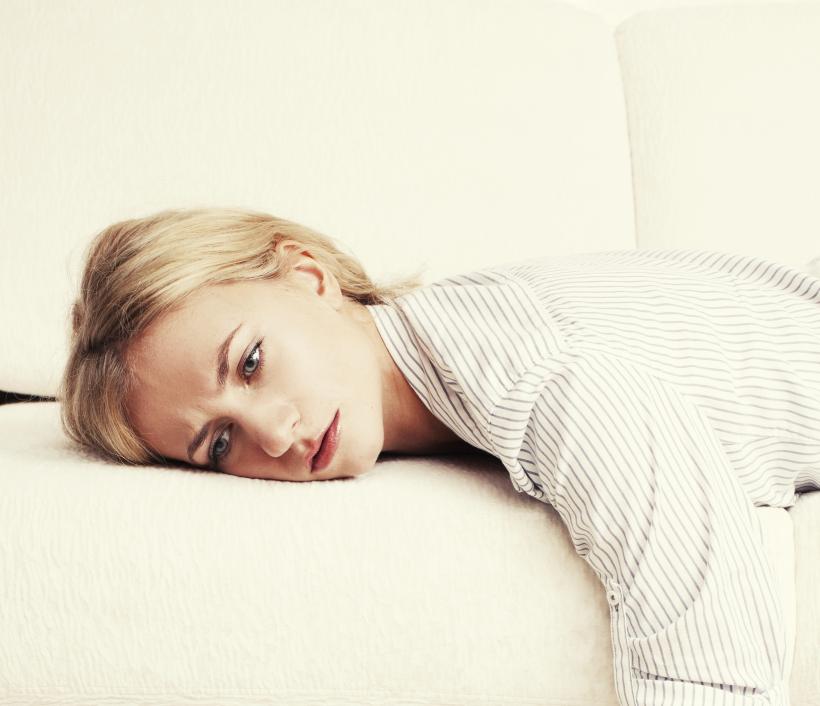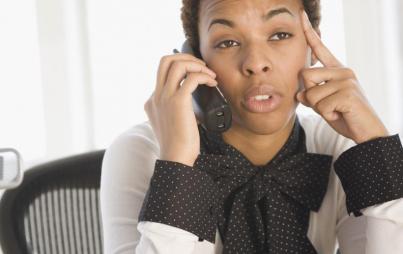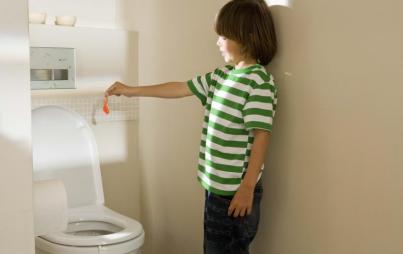
Credit: ThinkStock
When your vajayjay hurts, you know it's going to be a bad day. When that day turns to weeks, months, and even years, it affects both your body and mind. Truly, when you have chronic vaginal pain, it impacts every aspect of your life. Vulvodynia is an example of such a medical condition—one that can make you feel like you've been cursed by Satan himself.
With vulvodynia, it hurts to walk, urinate, have sex, sit, or wear tight clothing. Those tight, sexy jeans? Forget about it. Loose sweatpants will become your go-to outfit. In fact, you'll need them in all colors and styles for whatever function looms. And even with their aid, it often feels like you're wearing a sandpaper feminine napkin 24 hours a day. There are days when walking isn't worth it and sitting just isn't possible. And sex? It's next to impossible.
What Is Vulvodynia?
Vulvodynia is unexplained pain in the female vulva region—it's not contagious, but you'll feel like you need to call the fire department. You get this diagnosis after all other tests have come back negative. It can be confined to a single point or the entire area. It affects all women differently, but most use descriptors like: burning, inflamed, itching, red, and swollen. It can begin suddenly, with flare-ups lasting days, weeks—or even years.
Possible Causes
If you think you have it, you might resist going for an exam; the excruciating pain causes fear that you have some awful STD, a chronic disease, or even a rare form of cancer. The medical community doesn't know what causes this frustrating, painful condition. Years ago doctors believed it was caused by STDs or menopause but no evidence has surfaced to back this up. Not to mention, it affects women of all ages, not just those in the throes of menopause. Researchers and physicians now believe there may be multiple causes. Some possible sources they've identified are:
- Genetics
- Hormone fluctuations
- Past trauma from surgery, illness, or sexual abuse (tissue/nerve damage)
- High intolerance to vaginal infections and discharge
- Weakened pelvic muscles
- Incontinence
- Allergies
- Irritation from tight clothing
- Bladder spasms
The latest thinking by some doctors is that vulvodynia is not a tissue issue but a nerve issue. They believe that something is adversely affecting the nerves in the vulva area, which contributes to the pain. Using physical therapy to strengthen the pelvic floor, certain symptoms—like bladder spasms, incontinence, and nerve damage caused by weak muscles—may be relieved or eliminated.
Treatments And Outlook
Unfortunately, there's no cure for this condition. It has to be managed on an individual basis. In addition to physical therapy, some patients are treated with anti-depressants, estrogen prescriptions, and topical pain relievers. Each woman is different and treatment outcomes differ. If medications fail to help—as mentioned—physical therapy may be implemented; a combination of therapies may provide the best results. Each patient may need to try different medications to determine what relieves symptoms and provides the best outcome. Some patients report that vulvodynia disappears as quickly as it started but returns later. Some get relief from treatment, and some never do. Don't give up. You may need to try lots of medications and treatments before you find what is most helpful.
Self Help
Dealing with a painful condition like vulvodynia on a daily basis wreaks havoc on your mind and body, and thus can, by extension, negatively affect relationships. In some women, it causes severe depression and emotional upset; if you become depressed, sad, or desperate, seek medical attention immediately.
Also know that there are things you can do on your own to get relief:
- Don't wear tight clothing and avoid wearing sanitary pads; they can cause redness and chafing.
If you think you have a yeast infection, seek medical help to clear it up as soon as possible. Some physicians suggest staying active and avoiding prolonged periods of sitting. - - - Do exercise; just avoid exercises that may irritate, such as horseback riding and bicycling.
- Keep your vaginal area as clean and dry as possible, since urine can be acidic and worsen the condition. Some medical personnel also suggest taking a probiotic for vaginal health; ask your doctor if that's a good option.
- It's also a good idea to wash your underwear in detergent that's free of dyes and additives.
- Oh, and don't douche. It won't help. It can even screw up the beneficial bacteria in your vagina, which can promote infections. You definitely don't need that!
Seeing A Doctor
Understandably, many women are embarrassed to seek medical attention for this condition. They fear the worst and put it off. But if more women come forward, more awareness, education, and treatment options can be established. More research is definitely needed to find causes, treatments, and possibly even a cure. In the meantime, learning as much as possible is important. Knowledge is power; you are your best advocate.
If you haven't been diagnosed with vulvodynia but think you have it, see a doctor for an official diagnosis. You can then begin treatment and build a support system. Vajayjay issues don't make for good dinner conversations—but explain all the sordid details anyway. Explain them to your loved ones, friends, medical providers, and anyone else who will listen.
Take my word; you'll need all the support you can get.







